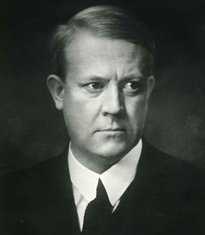Featured Quizzes
User Quizzes
Create Quiz
Data and Charts
Badges and Games
About JetPunk
JetPunk Shop
Dark Mode

Danish history true or false
There's an old Danish saying that "the truth must be heard from children and drunkards". About half the time, this quiz might have had a few too many Carlsberg.
Some of these statements are mostly true, but contains 1 falsehood, and so should be marked as false.
Rate:
Last updated: January 30, 2022
You have not attempted this quiz yet.
More quiz info >>
| First submitted | April 19, 2020 |
| Times taken | 82 |
| Average score | 58.3% | Report this quiz | Report |
3:00
The quiz is paused. You have remaining.
Scoring
You scored / = %
This beats or equals
% of test takers
also scored 100%
The average score is
Your high score is
Your fastest time is
Keep scrolling down for answers and more stats ...
1.
Viking helmets had horns.
True
✓
False
✓
Horned helmets did exist in ancient Denmark, but they were from the Bronze Age and were most likely used by priests.
2.
The Egtved stones, which contain the oldest known use of the name "Denmark", are commonly known as "Denmark's birth certificate".
True
✓
False
✓
They are called the Jelling stones.
3.
Valdemar I the Great, king of Denmark during the 1100s, was born a week after his father died.
True
✓
False
✓
Valdemar's father, Knud Lavard, was murdered in 1131 on the orders of his cousin Magnus I of Sweden.
4.
The Kalmar Union was a personal union where, for over a century, Danish monarchs also ruled Norway and Sweden.
True
✓
False
✓
The Kalmar Union was formed in 1397 by queen Margaret I, and ended in 1523 when Gustav Vasa became king of Sweden.
5.
Between 1513 and 1972, Denmark has an unbroken list of kings alternating between the names Christian and Frederick.
True
✓
False
✓
King John sat until his death in 1513, when Christian II took the throne. He was followed by Frederick I in 1523, Christian III in 1534, and so on. The line was broken in 1972, when Frederick IX died and his daughter, the current queen Margaret II, ascended. Her son and grandson are expected to become kings Frederick X and Christian XI.
6.
King Christian IV (reign 1588 to 1648) commissioned several historical buildings in Copenhagen, including Christiansborg Castle.
True
✓
False
✓
Christian IV is renown as a great builder, adding many important buildings to the city during his reign including Rosenborg Castle, the Round Tower, the Stock Exchange, and even the entire neighborhood of Christianshavn. However, he was not responsible for Christiansborg, which was built in the 1730s during the reign of his great-great-grandson Christian VI.
7.
Johann Friedrich Struensee was the personal physician and a trusted friend of the mentally ill king Christian VII. Using his influence on the king, Struensee loosened censorship laws and brought the Enlightenment to Denmark.
True
✓
False
✓
Struensee's hold on power was brief, lasting from 1770 to 1772. Most of his changes were reversed after Struensee's execution, but some were reinstated by king Frederick VI, who was partly raised by Struensee and saw himself as an enlightened absolutist.
8.
The Second Schleswig War (1864), where Denmark lost the duchies of Schleswig, Holstein, and Lauenburg, was ended by the Treaty of Strassburg in February 1865.
True
✓
False
✓
It ended with the Treaty of Vienna in October 1864.
9.
After its defeat in World War I, Germany was forced to give part of Schleswig back to Denmark. This triggered a constitutional crisis, when king Christian X dismissed the prime minister Carl Theodor Zahle because the king didn't like that Zahle wasn't asking for more land.
True
✓
False
✓
The Easter Crisis of 1920 was eventually resolved peacefully, with the king recognizing parliamentary supremacy. The area Sønderjylland was returned to Denmark in 1920, putting the Danish-German border where it currently is.
10.
Vidkun Quisling was prime minister of Denmark during part of World War II. He has become hated for his open support of the Nazis.
True
✓
False
✓
Quisling was prime minister of Norway 1942 to 1945. (Haha, I tricked you! It wasn't a mistake when I put Quisling as the quiz image).
11.
Denmark joined the European Union (then called the European Communities) in 1973, alongside Ireland and the United Kingdom.
True
✓
False
✓
After advocating for the "Yes" side in a referendum on joining the EU, Danish prime minister Jens Otto Krag resigned when it was clear his side was victorious.
12.
The Danish constitution allows for the creation of "Rigsretten", an interim court where government ministers can be impeached and punished for abuses of power, but this power has never been used.
True
✓
False
✓
Rigsretten has been activated six times between 1856 and 2021. Of the 16 people charged throughout its history, only 3 were convicted: Sigurd Berg in 1910 after the P.A. Alberti scandal, Erik Ninn-Hansen in 1995 after the Tamil Case, and Inger Støjberg in 2021 for separating asylum-seeking couples where one partner was under 18.
No comments yet
New and Popular
Save Your Progress
European history
Quiz series by BobIsACoprophage
...
Copyright H Brothers Inc, 2008–2024
Contact Us | Go To Top | View Mobile Site
